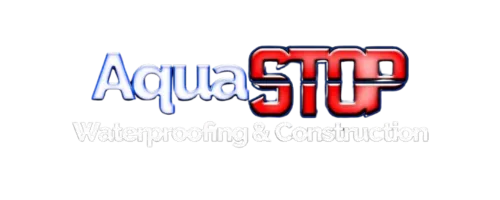AquaSTOP Waterproofing and Construction
CRAWLSPACE WATERPROOFING: EVERYTHING YOU SHOULD KNOW
CRAWLSPACE WATERPROOFING: EVERYTHING YOU SHOULD KNOW
Waterproofing your crawlspace is essential to maintaining a healthy, structurally sound home. At AquaStop Waterproofing and Construction, we specialize in providing effective solutions to keep your crawlspace dry and protected. Here's everything you need to know about crawlspace waterproofing.
What Is a Crawlspace?
A crawlspace is a low area beneath the first floor of a home, typically used for accessing plumbing and electrical systems. While they help elevate homes above damp soil, they are often prone to moisture and mold issues.
Why Waterproof Your Crawlspace?
Waterproofing your crawlspace enhances structural stability, improves air quality, and prevents mold growth. It also provides a clean space for storage and protects your home from pests and water damage.
Benefits of Crawlspace Waterproofing:
- Improved Air Quality: Reduces humidity and mold growth.
- Structural Integrity: Prevents wood rot and rust.
- Pest Control: Keeps out insects and rodents.
- Energy Efficiency: Better insulation reduces heating and cooling costs.
- Increased Property Value: A dry, healthy crawlspace is a selling point.
Signs of Waterproofing Issues
Be alert to these warning signs that your crawlspace may need waterproofing:
- Musty Odors: An earthy smell indicates dampness.
- Mold Growth: Black spots on walls or wood signal moisture.
- Damp Insulation: Waterlogged insulation is ineffective and costly.
- Pests: Insects and rodents thrive in damp environments.
- Wood Rot and Rust: Structural materials may deteriorate.
- Damage to Living Areas: Moisture can spread to upper levels.
- Decreased Property Value: A wet crawlspace can deter buyers.
Causes of Crawlspace Moisture
Moisture in crawlspaces can stem from several sources:
- Groundwater Seepage: Rising water levels during heavy rain can seep into your crawlspace.
- Condensation: Humid air condenses on cool surfaces in the crawlspace.
- External Flooding: Heavy rains can lead to water pooling around your home.
Methods of Crawlspace Waterproofing
There are several effective methods to waterproof your crawlspace:
Vapor Barriers - These are semi-permeable membranes that block liquid moisture while allowing water vapor to pass through, reducing mold growth and condensation.
Sump Pumps - These remove groundwater by pumping it out of your crawlspace. Ensure they have a backup power source for reliability during power outages.
Dehumidifiers - They help remove moisture from the air, combating condensation and maintaining a dry environment.
Encapsulation - involves sealing crawlspace vents, installing vapor barriers, and using a dehumidifier. This comprehensive approach provides excellent moisture control and insulation.
Drainage Systems - Proper drainage systems, including guttering, downspouts, and French drains, direct water away from your crawlspace, preventing flooding and seepage.
Comparing Methods
The choice of waterproofing method depends on the specific issues in your crawlspace, desired functionality, and budget. Each method has its advantages and costs:
- Vapor Barriers: Effective against seepage, cost-effective.
- Sump Pumps: Great for groundwater, requires initial investment.
- Dehumidifiers: Ideal for condensation, less effective for seepage.
- Encapsulation: Comprehensive but more expensive.
- Drainage Systems: Effective for flooding, varying costs.
Maintaining a Waterproofed Crawlspace
Regular maintenance is crucial for keeping your crawlspace dry and functional. Inspect the area periodically, address any issues promptly, and consult professionals for thorough assessments and repairs.
By properly waterproofing your crawlspace, you can transform it from a damp, musty space into a clean, dry area that enhances the overall health and value of your home.
For expert advice and professional waterproofing services, contact AquaStop Waterproofing and Construction today.
Office: Grosvenor Ave North, Hamilton, Ontario.
Call +1 (647) 362-1798
Email [email protected]
Site: www.aquastopwaterproofing.ca
A non-refundable deposit is required to secure all bookings. This deposit covers the cost of materials and preperation work carried out prior to the project start date.
